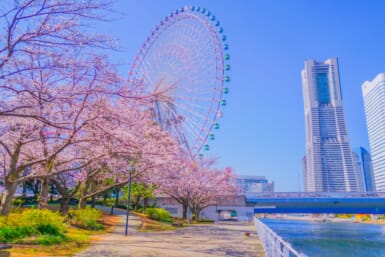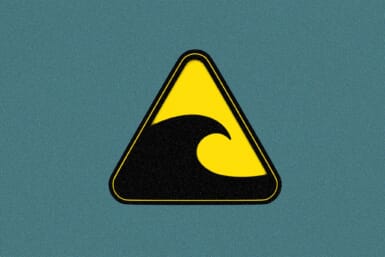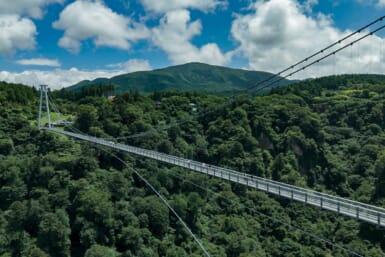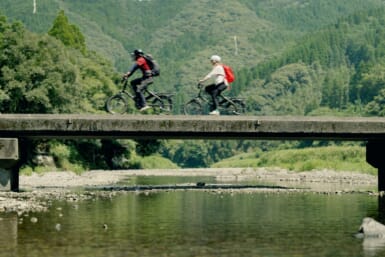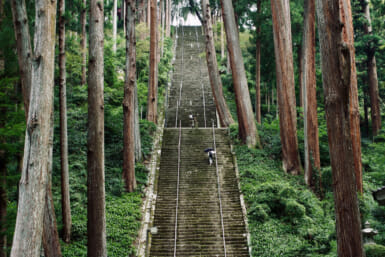by Elyse M. Rogers
TOKYO FIRE DEPARTMENT’S AMBULANCE SERVICE
Most foreign residents of Tokyo know or quickly learn that the fire department is in charge of the ambulance service and the country-wide number to call in a medical emergency is 119. However, few of us know just how the service works, or what a wide range of additional services the fire department provides for the community.To become better informed I interviewed Fire Sgt. Kimaya Ishida and then Lt. Kazuo Suzuki gave me a tour of the Command Control Center. Both gentlemen were kind enough to answer my battery of questions.
CALLING THE AMBULANCE
Some of you may remember my column three or four years ago, reporting that after much, much work on a personal level and with the help of the IMCC (International Medical Care Committee), of which I was secretary, we got an agreement with the Tokyo Fire Department that they would have English-language answering service available for the foreign community.
Well, I’m devastated to report that this agreement does not appear to be in place at the present time. What has happened to change that very important agreement I have not yet discerned, but you can be sure I have many people working on it, including the Chairman of the IMCC, Alfred P. Dienst, a long-time Tokyo resident and business leader. I will certainly let you know of any developments on that score as soon as I know of them.
Temporarily, at least, for those who don’t speak Japanese and don’t have an easily available Japanese-speaking friend or spouse to help them, I am going to have to suggest (again) that you learn how to ask for the ambulance and give your name, address and phone number in Japanese. Learning how to say your address and phone number in the native language is something I think is vital for any foreigner who lives in Japan, anyway, since it is information that will be helpful in other ways during your stay in Japan.
For the ambulance call, make out a sheet of what you want to say and post it in your kitchen so it will be near the phone and readily available for any member of the family. Practice until you can say it well, even without the written sheet.
If you have a specific family medical problem such as a spouse who has a heart condition or a child who has diabetes, you’d be wise to have a tape made and keep it and the tape recorder next to the phone in the kitchen. Have a Japanese friend or secretary give all the necessary information in Japanese on the tape, and have them repeat it several times. (This way you won’t need to rewind the tape to repeat the message.)
The ambulance dispatcher needs to know the following (in Japanese): 1) That you want the ambulance (as opposed to the fire engines) 2) What the problem is (someone unconscious, choking, etc.), 3) Location of emergency, 4) Your name, 5) Number of the phone you are using.
Here’s the “official” dialogue put out by the Tokyo Fire Department for foreigners to use:
Dispatcher: Shobocho. Kaji desu ka? Kyukyu desu ka? (Fire department. Is it a fire? Or an ambulance?)
Caller: Kyukyu desu. (I need an ambulance.)
Dispatcher: Do shimashita ka? (What’s the matter?)
Caller: Kodomo ga atama ni kega o shimashita. (My child injured his head.)
Dispatcher: Nani ku, nani machi, nan-ban desu ka? (What’s your address?) Note: Start with the ward and work backwards.
Caller: Nakano-ku, Yayoi-cho, ichi, go ju, ju ichi, Oriental Biru. (Your address)
Dispatcher: Onamae wa? (Your name?)
Caller: Rogers, Elyse desu. (Give your name, last name first.)
Dispatcher: Ima otsukaino denwa bango wa? (What’s the phone number where you’re calling from?)
Caller: San, nana, yon, no ni, roku, san, ichi. (Give your phone number.)
Be prepared to repeat, if necessary. Don’t worry if you can’t explain the medical problem in Japanese. I was assured they’d respond promptly even if all they understand is your name, your address and phone number.
For those who have some basic Japanese ability, you might want to end with “Hayaku kitte kudasai,” which means, “please come quickly.”
In addition, the Fire Department suggests that if you live in a hard-to-find location (are there any others in Tokyo?) that you or a family member go outside to direct them when you hear the ambulance so they can get to the patient as quickly as possible.
COMMAND CONTROL CENTER
It is through the Command Control Center at the central office of the Tokyo Fire Department in Otemachi that calls are handled. It works like this: a person calls the 119 number and that call is received by one of the 401 lines from 132 exchanges, by the person manning one of the dispatching consoles.
When the caller asks for an ambulance (kyu kyu sha), the dispatcher gets the necessary information from the caller and then passes it on to the ambulance centers (ambulances are kept at local fire department stations).
Information received is passed back to the fire department personnel who man the Ambulance Control Consoles. These people have computers which tell them which hospital is the closest to the caller’s location and has an available doctor and open facilities.
The Ambulance Control personnel not only find the hospital and provide information on the incoming patient to that hospital, but they have two-way communication with the ambulance staff. If necessary, a doctor at a special General Command Console can give advice and counsel to the ambulance staff.
At the 119 number (in Tokyo) they received 706,427 calls in 1986, or an average of 1,935 per day. This includes all calls, including those for fire and other emergencies but still there were an impressive number of 317,375 ambulance responses in that same year or an average of 870 per day. So, when you hear that ambulance siren whining, remember it’s only one of close to a thousand daily.
The Command and Control Center is remarkably calm for such a busy place with lights blinking, computers printing and telephones ringing. It also houses a television screen which is part of the Radio and TV Helicopter Control Console. On this screen it’s possible to see actual pictures of fires, accidents or natural disasters via helicopter-mounted cameras.
Fortunately there was no bad fire in Tokyo while I was visiting the Control Center, but they ran a tape to show me the type of TV picture they receive. I tell you, those aerial pictures of a past large fire were most impressive (and very graphic) and I can see how they would be very helpful to the department in planning how to fight and contain the blaze.
AMBULANCES AND STAFF
The good news is there are 158 ambulances in the Tokyo 23 ku (ward) area, equipped and ready to serve at a moment’s notice. There are 507 hospitals available to provide care. Ambulance personnel (usually there are three to an ambulance, I was told) have had basic training in first aid, CPR (cardio-pulmonary resuscitation) and know how to do the Heimlich Maneuver (when someone is choking from food or a foreign object stuck in his/her windpipe).
The bad news is that legally the ambulance personnel are not allowed to administer medications, start intravenous fluids or do any treatments that might be considered “medical” in nature. Only a doctor can do that and doctors do not man the ambulances. Unfortunately, the ambulance staff cannot even perform such duties when they are in direct contact with a physician via the ambulance’s two-way communication system.
I was pleased to hear about the training of ambulance personnel and impressed that they are better trained than they were even a few years ago. However, although I’d sure like to believe the personable Sgt. Ishida and his colleagues, I’ve seen and heard from you folks about times when there were fewer than three men in the ambulance and they did not appear to be outstandingly skillful in first-aid or sick-patient management.
It’s well to remember, however, that despite any deficiencies, most times the ambulances and their crews do a speedy and efficient job of getting patients to the hospital. Also, to its credit, the fire department continues to improve and refine its medical-emergency services.
INFORMATION DESK
I found out about a fire department service of which I was previously unaware. You might find it useful but will need pretty good Japanese language skills (or access to a friend who speaks Japanese) to use this service.
The Information Desk fields inquiries from citizens about hospital, fires and other concerns. I think it’s easier to illustrate than explain. For example, if a patient is not ill enough to require transportation by ambulance but needs medical or emergency care, by calling the Information Center the patient or the family can learn which is the closest hospital (to his location) that has space, an available doctor, etc.
Another example. If your spouse said he/she would be home at 6 p.m. and doesn’t appear by 11 p.m. and you’re fearful he/she has been in an accident, you can call the Information Desk and see if a patient by that name has recently been taken to the hospital. I don’t think they’d have a problem with gaijin names, but if your spouse is Japanese, you’ll have to give the first name too.
While I was there they demonstrated the program by calling up the name Tanaka on the computer screen; it flashed back a list of about 25 “Tanakas” who had been hospitalized that day!
The Information Desk handles 230,823 calls a year, or an average of 632 per day. The number for this service is 212-2323, but be prepared to speak in Japanese.
Once again, the ambulance emergency number is 119 from anywhere in Japan. On some pay phones there is a special emergency button you press to dial the number.
I hope you’ll never have to use the services of the Tokyo Fire Department but it’s nice to know the staff is there waiting to serve if needed.


